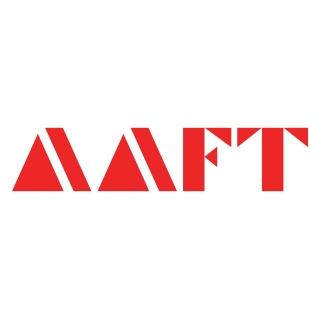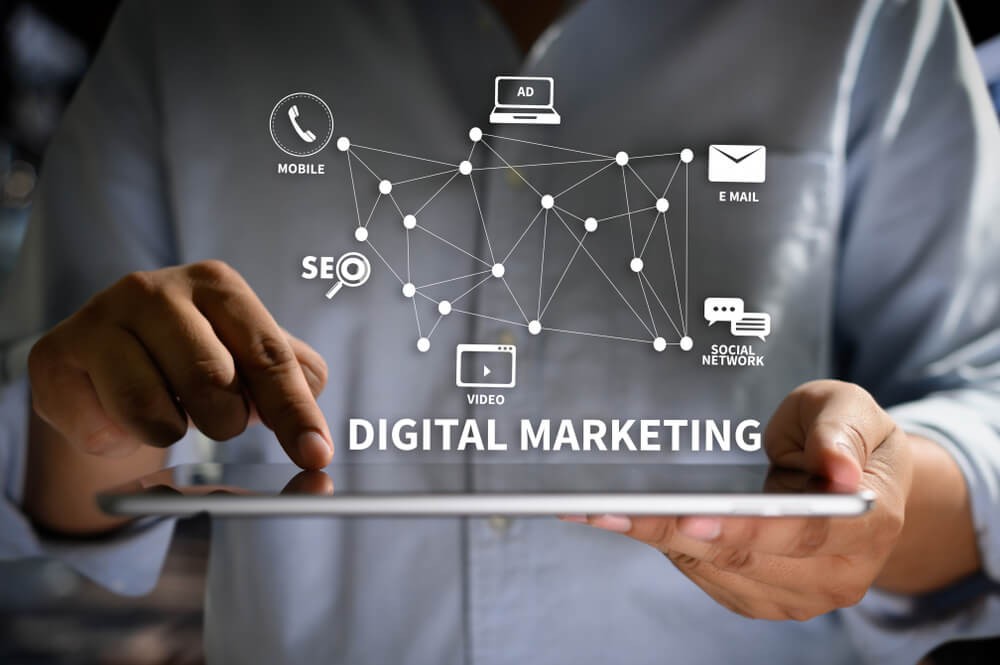Impact of Social Media on Advertising in the Digital Age
Gone are the days when brands relied solely on TV and Print Ads. Today, 73% of marketers admit that Social Media Ads have been effective in increasing their traffic, leading to their business growth.
With TikTok, Instagram, and Facebook dominating the Marketing scene, businesses are jumping on trends like influencer collaborations, Meme Marketing, and User Generated Content (UGC) to keep their audiences engaged. Plus, Digital Marketing Courses are really honing in on these trends to help maximize reach and impact.
In this blog, we will delve into how Social Media has completely transformed Advertising and what the future holds for businesses embracing a Digital Marketing Course to stay competitive in the modern digital ecosystem.
The Evolution of Social Media in Advertising
Social Media has transformed from a typical networking space to a major Marketing tool. Businesses now use it not only for their audience engagement but also to promote products, engage customers, and drive sales. Here’s a brief overview of how Social Media Marketing has evolved over time with 2025 in place:
| Timeline | Event | Description |
| Early to Mid-2000s | Early Social Media Platforms Paved the Way for Digital Marketing | Platforms like Myspace and Friendster introduced online networking, and businesses saw the potential to reach customers. |
| Mid to Late 2000s | Businesses Began Using Social Media To Connect With Consumers | Companies started creating Social Media profiles and sharing content like blog posts and ebooks. |
| Late to Early 2010s | Paid Advertising Became a Key Social Media Marketing Component | Marketers began running targeted ads on social platforms. |
| Early to Mid 2010s | Social Media Marketing Evolved Beyond Paid Ads | Businesses started using organic content to build relationships and brand identity. |
| Mid-2010s – Now | Video Content Became a Dominant Digital Marketing Force | Platforms like TikTok and Instagram increased the demand for short, engaging videos. |
| Mid-2010s – Now | User-Generated Content (Ugc) Built Brand Credibility | Consumers started sharing their experiences with brands, influencing others. |
| Late 2010s – Now | Influencer Marketing Turned Into a Multi-Billion-Dollar Industry | Businesses partnered with influencers for product promotion. |
| 2020s – Now | Social Commerce Enabled Direct Social Platform Purchase | Platforms like Instagram and TikTok introduced in-app shopping features. |
Examples of Social Media Trends in Advertising
Do you want free career counseling?
Ignite Your Ambitions- Seize the Opportunity for a Free Career Counseling Session.
- 30+ Years in Education
- 250+ Faculties
- 30K+ Alumni Network
- 10th in World Ranking
- 1000+ Celebrity
- 120+ Countries Students Enrolled
Social Media trends offer brands innovative ways for their audience connection and engagement of their audiences. Here are the key examples of Social Media Advertising trends described below:
- Influencer Collaborations: Influencers partnering allows brands credibility and reach wider audiences within a trend. These partnered influencers bring authenticity, as their followers trust their recommendations and interactions. This strategy enhances brand visibility and strengthens the trust of the consumers.
- Viral Challenges: Brands create or join viral challenges for their user participation engagement and organic promotion. These challenges invite people to showcase their creativity while performing brand’s product or message engagement. Successful campaigns help to drive massive engagement and widespread brand recognition.
- Hashtag Campaigns: Brands create unique hashtags to join trending conversations and encourage audience participation. A well-crafted hashtag campaign can increase content discoverability and drive Social Media engagement. Additionally, brands can position themselves within popular discussions through relevant hashtags, further expanding their reach.
- Live Streaming Events: Brands use live streams for real-time audience engagement and create interactive experiences. Live videos help brands in new products display, answer questions, or participate in trending discussions. This direct engagement builds stronger customer relationships and enhances brand transparency.
- Meme Marketing: Brands leverage popular Memes to communicate their messages in a humorous and relatable way. Memes make Advertising feel less intrusive and more Social Media user engagement.
How Social Media Impacts Digital Advertising
Digital Marketing Course Near Me strategies highlight the available advanced tools to target specific customers and engage with them in meaningful ways. Furthermore, as social media platforms develop, their Marketing impact will only improve. Here’s how Social Media impacts businesses:
Read Also: Top 10 Career Opportunities After a Digital Marketing Course
Book Now →
1) Boosts Website Traffic
Social Media Ads and posts drive users to business websites or Landing Pages. Through the right audience targeting, businesses can attract customers who are genuinely interested in their products. As more traffic increases the conversions and chances of sales.
2) Expands Audience Reach
Traditional Marketing limits businesses to specific regions or demographics. Social Media connects them with billions of users worldwide. With precise targeting options, brands can reach interests, behaviours, and demographics-based people.
3) Strengthens Customer Engagement
Unlike traditional ads, Social Media allows two-way communication between businesses and customers. Brands can answer comments and queries and build strong audience relationships. This interaction provides valuable insights that help improve products and services.
Do you want free career counseling?
Ignite Your Ambitions- Seize the Opportunity for a Free Career Counseling Session.4) Increases Brand Awareness
Businesses introduce their brand to new customers through engaging and relevant ads. Consistently appearing on users’ feeds builds familiarity and trust. Social Media also allows brands to display their personality and values, further strengthening customer loyalty.
5) Cuts Marketing Costs
In comparison to TV, radio, and Print Ads, you require less investment for Social Media Marketing. Businesses can easily set budgets, perform real-time performance tracking, and adjust campaigns for better and more efficient results. Furthermore, with detailed Social Media analytics, companies can enhance their ad spend and achieve a strong Return on Investment (ROI).
Read Also: Understanding The Key Components Of Digital Marketing
The Role of Social Media Trends in Advertising
By tapping into Social Media trends, brands can boost their visibility, relevance, and audience interaction. Let’s explore the key ways on how Social Media trends influence Advertising through a Digital Marketing Course approach below:
1) Enhanced Engagement
Trending topics naturally drive high levels of interaction, encouraging comments, likes, and content sharing for users. Brands that engage with viral trends create buzz and invite their products or service conversations. This increased engagement builds brand awareness and fosters stronger customer connections.
2) Targeted Marketing
Social media platforms use highly advanced Algorithms to help brands target users interested in specific trends. By analyzing user behavior, brands can deliver personalized ads to allow the engagement of people with particular topics. This precision ensures the reachability of the advertising efforts to the most relevant audience for boosted conversion rates.
3) Creative Opportunities
Trends bring in new formats and styles, giving brands fresh and exciting ways for the display of their products or services. Whether it’s short-form videos, interactive filters, or meme-based content, these trends encourage brands to get creative. This creativity makes ads not just more entertaining, but also memorable and shareable.
4) Increased Reach and Visibility
Jumping on trending hashtags, challenges, or formats is a great way for brands to attract a bigger audience. By aligning their popular content, brands can boost their visibility and enable their content to reach millions of users, further expanding their visibility.
Read Also: Top 7 Strategies for Effective Brand Communication
5) Community Building
Trends create a sense of belonging by bringing together users through shared experiences and conversations. With the participating brands, they encourage user-generated content and authentic interactions. This approach fosters a loyal community where customers feel connected with their brands more than just their products.
Challenges in Social Media Advertising
Social Media Marketing is exciting but comes with its own set of challenges. From audience engagement to staying relevant with trends, brands must smartly tackle these hurdles for real corporate success. One way to develop the right skills to navigate these challenges is by enrolling in Digital Marketing Courses Near Me:
1) Coming Up with New Content Ideas
Posting at regular intervals keeps your audience engaged. However, fresh ideas can be challenging to find. For this, brands can stay inspired by checking relevant and trending hashtags, enabling efficient competitor analysis, and using the latest templates.
2) Boosting Engagement Rates
If people aren’t interacting with your content, it may not be as engaging as you think. Brands must create interactive posts like polls, giveaways, user-generated content, videos, and blog links to encourage higher user participation. More engagement leads to better visibility and stronger customer relationships.
3) Using High-Quality Images & Videos
Good visuals are key to standing out on Social Media and attracting potential customers. Brands should invest in Professional Photographers or use highly professional Cameras to ensure their image and video sharpness and engagement. Moreover, since many users rely on visuals to make purchasing decisions, poor-quality images can hurt a brand’s credibility and sales.
Read Also: Top 10 Digital Marketing Trends to Watch in 2025
4) Handling Customer Service & Community Management
Customers expect quick Social Media replies, and delays can harm a brand’s reputation. A dedicated team or an external agency can help in message management, address complaints, and effectively handle crises. Fast and professional responses build trust and improve customer relationships.
5) Keeping Up with Trends
Trends are rapidly changing, and brands need to stay updated to remain relevant. This can be done through reading industry blogs, checking new platform features, using trending audio, and observing what’s popular on Social Media. Timely participation in trends helps boost visibility and engagement.
6) Avoiding AI Mistakes in Data Analysis
AI tools sometimes cause customer feedback misinterpretation due to sarcasm, slang, or emojis. This can lead to incorrect sentiment analysis, affecting the brand decisions. By manually reviewing by real people, you can have accurate insights that can help brands make informed improvements in their business strategies.
7) Tracking Social Media Performance
For success measurement, brands need clear goals and must track key performance indicators (KPIs). Different brands focus on distinctive goals-based metrics, ranging from engagement rates to customer service response times.
The Future of Social Media Advertising
Read Also: Best Courses After 12th Arts – Top Career Options for Arts Students
Social Media is evolving at a rapid pace, and to stay competitive, businesses must keep up with new trends. Here are five key trends shaping the Future of Marketing in Social Media through Digital Marketing Course and how brands can leverage them to easily connect with their audiences:
- Artificial Intelligence (AI) is Taking Over: AI tools help brands analyze customer feedback, create personalized content, and automate ad campaigns. Moreover, AI makes Social Media Marketing faster and more effective.
- Augmented Reality (AR) is Growing: AR features like Snapchat lenses and virtual try-ons are making Marketing more interactive. Brands can use AR to let customers digitally try products before buying.
- Short-Form Videos Are the Future: Platforms like TikTok, Instagram Reels, and YouTube Shorts are dominating because people love quick content that is precise and addresses their issues. Brands should use short videos to grab attention and boost engagement.
- Influencer Marketing is Changing: Smaller influencers (micro-influencers) are becoming more valuable because of their loyal audiences. Brands are also focusing on long-term influencer partnerships instead of one-time promotions.
- Building Real Connections is Important: People prefer human and more-relatable brands instead of generic ones. Instead of just selling, brands should engage with their audience, respond to messages, and create meaningful content.
Conclusion
Social Media Advertising goes beyond just a trend; it revolves around the exciting Digital Marketing future of Digital Marketing. Moreover, with evolving Social Media platforms, trends keep on shifting, and user behavior changes constantly. However, one thing that remains constant throughout is the brands that engage their audience effectively will always win in the long term!
Begin your Digital Marketing journey with a Digital Marketing Course in Delhi at AAFT. With expert training and hands-on experience, we can transform your Digital Marketing dreams into reality. Grab your seats today!

AAFT has been providing the world with limitless creativity and expression since 1993! Through a dynamic and industry-driven curriculum, AAFT provides engaging and captivating articles to persuasive blogs and empowers its readers to explore diverse avenues of creative media education-related content.






